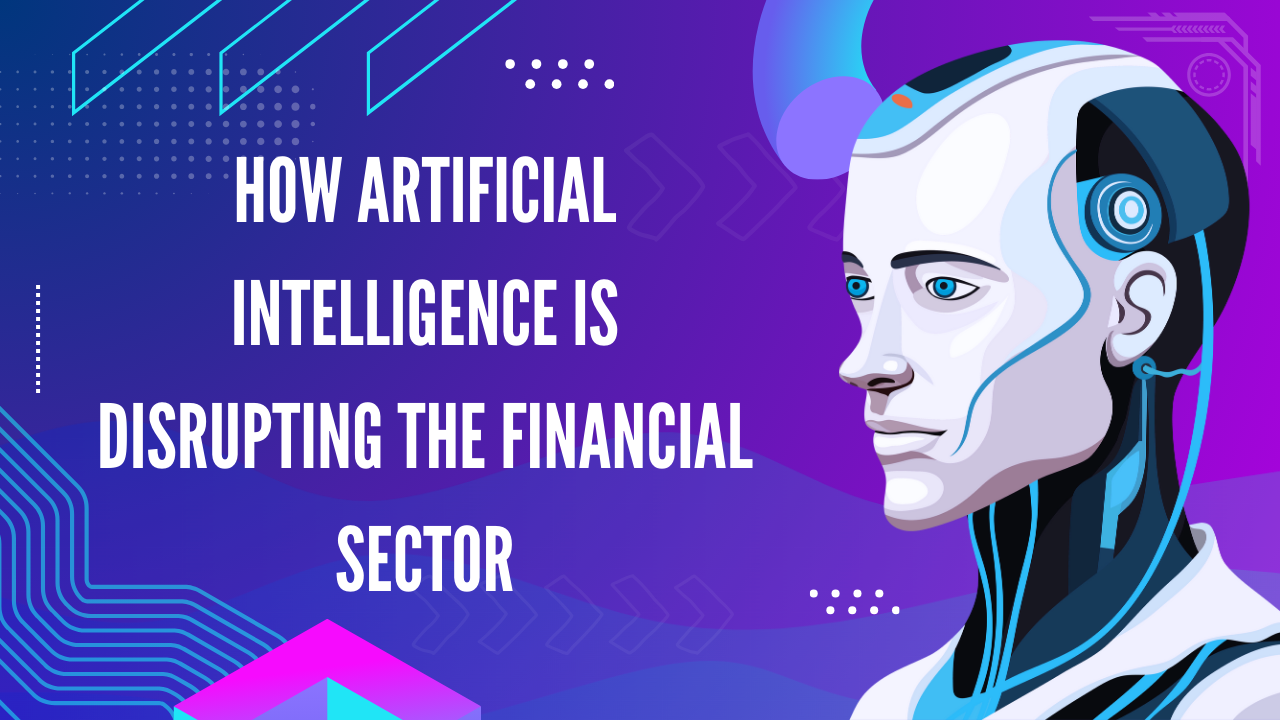Artificial Intelligence (AI) is rapidly transforming various industries, and the financial sector is no exception. With the ability to analyze vast amounts of data, recognize patterns, and make predictions, AI is reshaping how financial institutions operate, manage risk, and serve their customers. This blog will explore the key ways in which AI is disrupting the financial sector, highlighting its benefits, challenges, and future implications.
1. Enhanced Risk Management
One of the most significant contributions of AI in finance is its ability to improve risk management. Traditional risk assessment models often rely on historical data and fixed parameters, which can be limiting. AI, on the other hand, uses machine learning algorithms to analyze real-time data, enabling financial institutions to identify potential risks more accurately and promptly.
For example, AI systems can monitor transaction patterns to detect fraudulent activities, reducing the chances of financial loss. By leveraging predictive analytics, banks can assess the likelihood of defaults on loans, allowing them to adjust their lending strategies accordingly.
2. Improved Customer Service
AI is also revolutionizing customer service in the financial sector through the implementation of chatbots and virtual assistants. These AI-driven tools can handle a wide range of customer inquiries, providing instant responses and reducing wait times. This not only enhances the customer experience but also allows human agents to focus on more complex issues.
Furthermore, AI can analyze customer data to provide personalized financial advice and recommendations. By understanding individual spending habits and preferences, financial institutions can tailor their offerings, improving customer satisfaction and loyalty.
3. Automated Trading and Investment Strategies
AI algorithms are increasingly being used in trading and investment strategies. High-frequency trading (HFT) firms leverage AI to analyze market data at lightning speed, making decisions in milliseconds. These algorithms can identify profitable trading opportunities and execute trades far more efficiently than human traders.
Moreover, robo-advisors powered by AI offer automated investment management services. They assess clients’ financial situations, risk tolerance, and investment goals to create personalized portfolios. This democratizes investment opportunities, making them accessible to a broader audience while reducing management costs.
4. Regulatory Compliance
Compliance with regulatory requirements is a major challenge for financial institutions. AI can help streamline this process by automating compliance checks and monitoring transactions for suspicious activities. AI systems can analyze vast amounts of data to ensure adherence to regulations, minimizing the risk of costly penalties.
Additionally, AI can help institutions stay updated on changing regulations. By utilizing natural language processing (NLP), AI can scan and interpret legal texts, ensuring that organizations remain compliant with evolving laws.
5. Credit Scoring and Lending
Traditional credit scoring models often rely on a limited set of criteria, which can lead to unfair lending practices. AI can enhance the credit scoring process by analyzing a broader range of data points, including alternative data sources such as social media activity and payment histories. This provides a more comprehensive view of a borrower’s creditworthiness.
As a result, AI-powered lending platforms can make more accurate lending decisions, reducing default rates and expanding access to credit for underserved populations.
6. Challenges and Concerns
While AI offers numerous benefits to the financial sector, it also presents challenges. One of the primary concerns is data privacy and security. Financial institutions must ensure that sensitive customer data is protected from breaches and unauthorized access. As AI systems rely on large datasets, the risk of data misuse increases, necessitating robust cybersecurity measures.
Additionally, there are ethical considerations surrounding the use of AI in finance. Bias in AI algorithms can lead to discriminatory practices, particularly in lending and credit scoring. It is crucial for financial institutions to ensure transparency in their AI models and regularly audit them to mitigate these risks.
7. The Future of AI in Finance
The disruption caused by AI in the financial sector is just beginning. As technology continues to evolve, we can expect even more innovations that will further transform how financial institutions operate. From advanced predictive analytics to more sophisticated chatbots, AI will play an increasingly vital role in enhancing efficiency, reducing costs, and improving customer experiences.
Moreover, collaboration between fintech companies and traditional financial institutions will likely accelerate the adoption of AI. By combining their strengths, these entities can create more innovative solutions that cater to the changing needs of consumers and businesses.
Conclusion
AI is undeniably disrupting the financial sector, driving significant changes in risk management, customer service, trading strategies, regulatory compliance, and lending practices. While challenges remain, the potential for AI to enhance efficiency, reduce costs, and improve customer experiences is immense. As the financial industry continues to embrace this technology, it will be crucial for institutions to navigate the associated risks and ensure ethical practices. The future of finance is undoubtedly intertwined with the advancements in AI, promising a more efficient, accessible, and customer-centric financial landscape.
